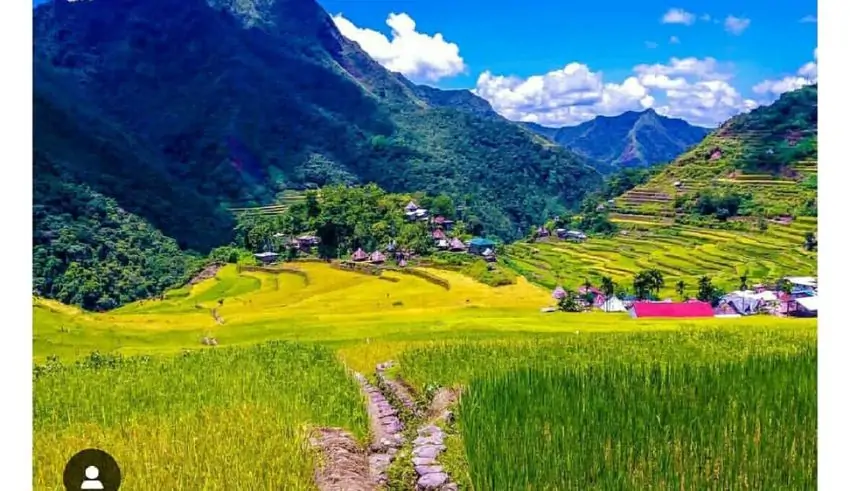

(C) ifugaotourism IG
Last updated on May 20th, 2024 at 05:02 pm
By the time the decade is out, the Philippines is still struggling with extreme poverty. Even with all of the community improvement initiatives, certain areas are still quite economically deprived. As of 2024, the ten poorest cities in the Philippines are highlighted in this editorial, which also explores the underlying reasons and emphasizes how urgently long-term solutions must be found.
A complicated problem, poverty still affects millions of Filipinos. With a poverty rate of 22.4% in the first half of 2023, the Philippine Statistics Authority estimates that more than 25 million Filipinos find it difficult to achieve their basic requirements. The fact that poverty persists in so many places highlights its complex character, comprising political, social, and economic elements that need for comprehensive and targeted remedies.
The cities with the highest poverty rates are shown below according to recent data:
1. Lanao del Sur: With 67.3% of its people living in poverty, Lanao del Sur has severe economic issues made worse by a dwindling population, continuous conflict, infrastructure issues, and restricted access to basic services. Restoring peace and financing development programs are prerequisites for economic recovery.
2. Maguindanao: Its tumultuous history still hinders its progress, as seen by the 54.5% poverty rate there. Along with the creation of solid government systems, rebuilding calls for financial resources and reconciliation initiatives.
3. Northern Samar: At 43.5% of the population, Northern Samar is impoverished even with its tourist potential. Its natural beauty may be properly used by local enterprises, sustainable tourism promotion, and infrastructure upgrades.
4. Sarangani: Sarangani is 46.0% impoverished and is a part of the SOCCSKSARGEN zone. Leveraging its cultural diversity and room for expansion, investments in local companies, healthcare, and education can propel economic growth.
5. Sulu: The serious problems facing Sulu are reflected in the high poverty rates. Better infrastructure, security measures, and robust economic activity are essential to stabilizing the area.
6. Siquijor: Although sometimes disregarded, the tiny island’s inhabitants struggles greatly economically. Better market connection combined with investments in regional businesses, ecotourism, and handcrafted products can give locals additional sources of income.
7. Zamboanga del Norte: With a 50.3% poverty rate, Zamboanga del Norte is in need of development and help. Improving agricultural output, transportation networks, and educational possibilities is necessary to lower poverty.
8. Davao Oriental: Davao Oriental faces economic difficulties with a 48% poverty rate. Living standards may be raised by diversifying the economy, funding sustainable agriculture, and strengthening resistance to natural calamities.
9. Ifugao: Although home to a rich history and culture, 47.5% of the population is impoverished. The local economy can be strengthened by encouraging sustainable tourism and agriculture; cultural heritage sites are particularly important for employment generation and economic expansion.
10. Eastern Samar: Eastern Samar emphasizes the need of focused poverty reduction measures with a rate of 59.4%. Development of it depends on funding public health services, economic prospects, and disaster risk reduction.
The wider socioeconomic problems the Philippines is dealing with are best illustrated by these cities. Improving employment, healthcare, and educational possibilities is just one aspect of the all-encompassing strategy needed to address the underlying reasons of poverty in these communities. Long-term solution development calls for government and non-governmental organization (NGOs) collaboration.
Increasing availability of high-quality education is essential. Building and maintaining the facilities of schools, training teachers, and guaranteeing the availability of instructional materials should be the key priorities of initiatives. Programs for vocational training catered to regional economies can give locals the abilities required for entrepreneurship or steady job.
– Developing School Infrastructure: Putting money into schools, particularly in rural regions, gives kids comfortable learning settings.
– Teacher Training: Teachers that pursue ongoing professional growth are better able to use contemporary teaching strategies to engage their pupils.
– Accessible Educational Materials: Academic achievement depends on students having access to textbooks, online resources, and other learning materials.
It is imperative to upgrade the facilities and services in healthcare. Telemedicine, mobile clinics, and new health facility building can guarantee that even isolated populations have access to medical treatment. Furthermore greatly enhancing health outcomes are preventative care programs and public health campaigns.
– Mobile Clinics and Telemedicine: Providing necessary services including immunizations, prenatal care, and emergency care to isolated and underprivileged communities.
– Building Health Facilities: Providing citizens in underprivileged areas with access to essential medical care is ensured by building new hospitals and clinics.
– Public Health Campaigns: Improving general health and lowering the incidence of diseases can be accomplished by teaching communities about cleanliness, nutrition, and preventative health practices.
Creating and upholding communication networks, roads, and bridges can boost access to markets, education, and healthcare while also promoting economic activity. Sustainable economic prospects need the encouragement of entrepreneurship, support of regional industries, and investor attraction.
– Roads and Bridges: Enhanced transportation infrastructure links outlying areas with cities, therefore promoting the movement of commodities and services and providing access to necessary services.
– Communication Networks: Increasing mobile and internet connectivity allows people in rural regions to access information and services and take part in the digital economy.
– Supporting Local Industries: Putting money into regional businesses like handicrafts, fishing, and agriculture can generate jobs and strengthen the local economy.
– Encouraging Entrepreneurship: Residents can launch and expand their own enterprises with the support of microfinance and business training.
These cities’ situation demands that the public and commercial sectors take action. Breaking the cycle of poverty requires long-term plans emphasizing infrastructure, healthcare, and education. Working together, these communities may experience sustainable growth and a better future.
Millions of Filipinos’ quality of life may significantly improve if the underlying reasons of poverty are addressed through thorough and focused initiatives. The Philippines’ economic environment will change dramatically if different stakeholders agree to collaborate in order to achieve these objectives and guarantee that no community is left behind.
It is imperative to enable local communities to manage their own development. Participatory planning and community-led projects can guarantee that development projects have long-term sustainability and meeting of the real demands of the people.
– Environmental Sustainability: Long-term economic stability and the preservation of natural resources are promoted by making sure development projects are environmentally sustainable.
– Resilience Building: Long-term development depends on creating plans to fortify communities against economic downturns, calamities of the natural world, and other catastrophes.
In conclusion, tackling poverty in the Philippines calls for a comprehensive and cooperative strategy involving all societal segments and aimed at the underlying causes. Millions of Filipinos may have their poverty drastically reduced and their quality of life improved by funding infrastructure, education, healthcare, and economic prospects as well as local communities.
The Chinese Coast Guard ships extended their stays near the Senkaku Island region which led Japan to lodge formal diplomatic…
Numbeo reports in the 2025 Safety Index that the United Arab Emirates (UAE) has become the second safest country in…
Thailand’s automobile sector remains heavily challenged as car output during February 2025 dropped 13.62% year on year to 115,487 units.…
The Canadian Security Intelligence Service (CSIS) has officially warned about foreign entities trying to change election results on April 28th.…
Samsung Electronics CO-CEO Han Jong-hee has passed away suddenly after suffering a heart attack, as announced Tuesday. The sudden demise…
The Japanese market for mergers and acquisitions now allows unsolicited acquisition offers due to recent Ministry of Economy Trade and…
This website uses cookies.
Read More